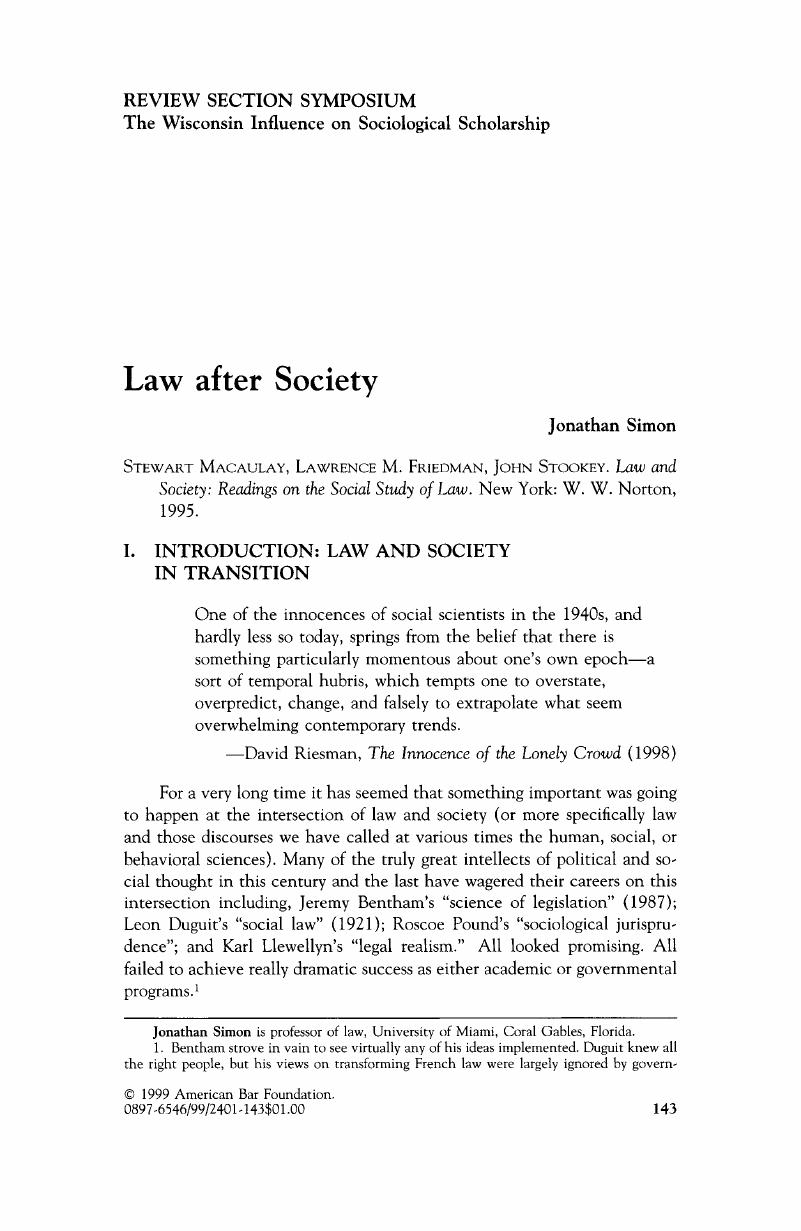Crossref Citations
This article has been cited by the following publications. This list is generated based on data provided by Crossref.
SIMON, JONATHAN
2000.
The `Society of Captives' in the Era of Hyper-Incarceration.
Theoretical Criminology,
Vol. 4,
Issue. 3,
p.
285.
Simon, Jonathan
2002.
Speaking Truth and Power.
Law & Society Review,
Vol. 36,
Issue. 1,
p.
37.
Munger, Frank
2003.
Poverty, Welfare, and the Affirmative State.
Law & Society Review,
Vol. 37,
Issue. 3,
p.
659.
Galanter, Marc
2006.
In the Winter of Our Discontent: Law, Anti-Law, and Social Science.
Annual Review of Law and Social Science,
Vol. 2,
Issue. 1,
p.
1.
Sarat, Austin
2014.
From Movement to Mentality, from Paradigm to Perspective, from Action to Performance: Law and Society at Mid‐Life.
Law & Social Inquiry,
Vol. 39,
Issue. 01,
p.
217.
Banakar, Reza
2015.
Normativity in Legal Sociology.
p.
1.
Banakar, Reza
2015.
Normativity in Legal Sociology.
p.
41.
2019.
Social Jurisprudence in the Changing of Social Norms.
p.
1.
Sénéchal, Yan
and
Noreau, Pierre
2020.
Présentation.
Sociologie et sociétés,
Vol. 52,
Issue. 2,
p.
13.





